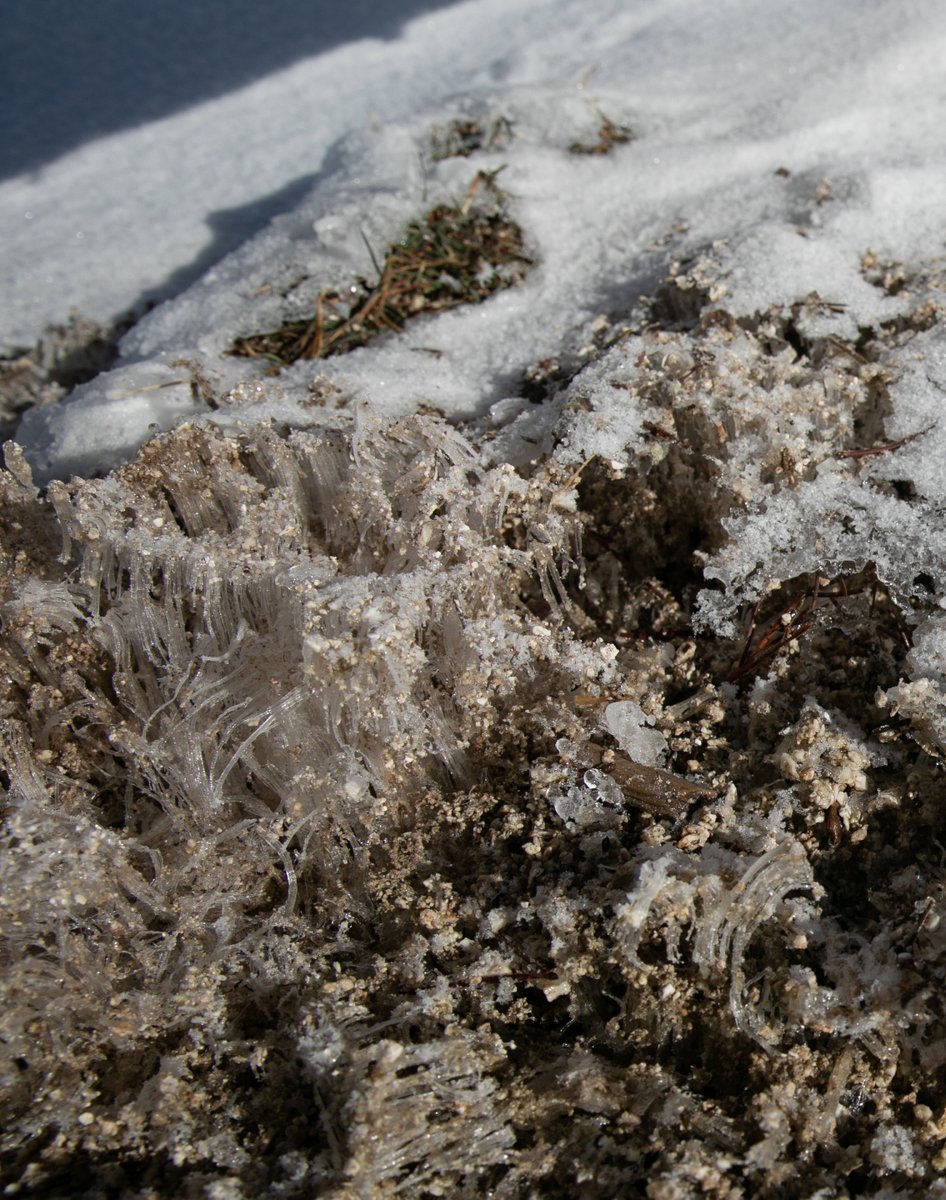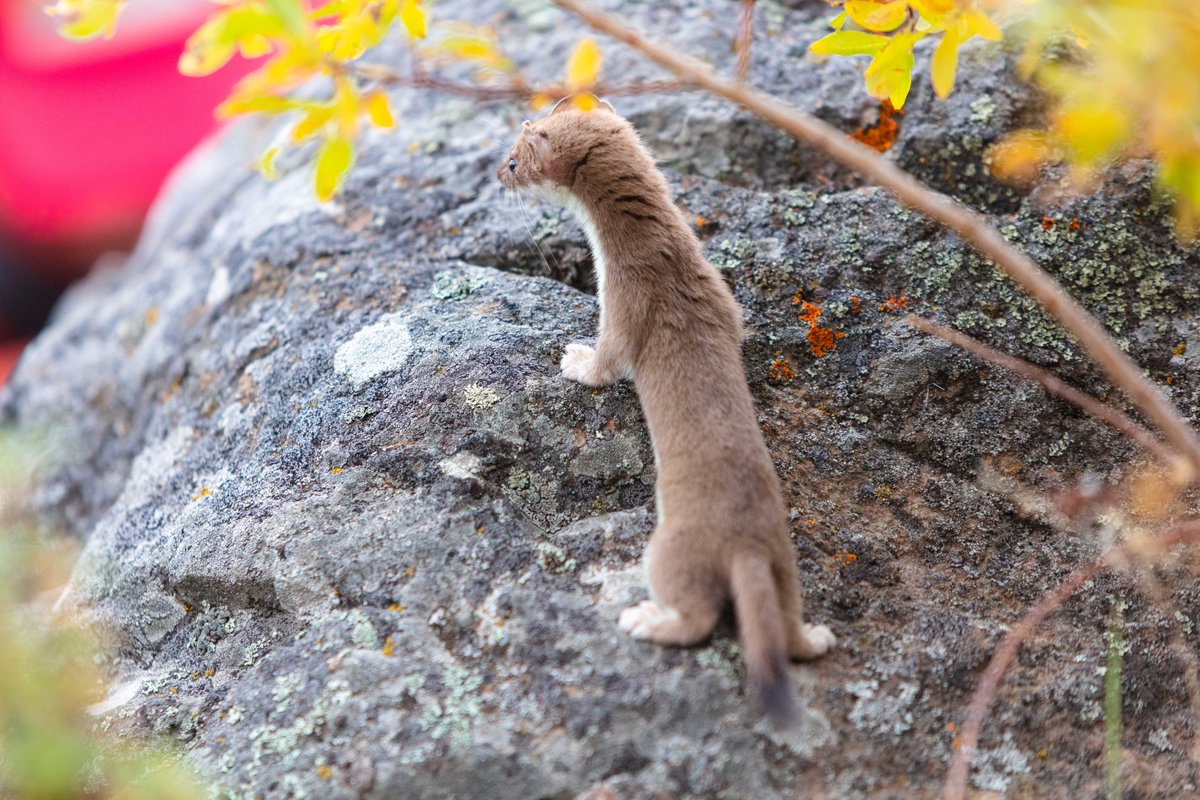
If you've spent time in freezing temperatures, you've probably seen an icicle before—a hanging spear of ice that forms as dripping water freezes. ❄️ 

But have you ever seen columns of ice that start in the ground and grow upwards? You can see an example of that in the second photo!
Called "needle ice" or "frost pillars," these structures are commonly found in the soil during the early days of winter.
NPS/Diane Renkin
Called "needle ice" or "frost pillars," these structures are commonly found in the soil during the early days of winter.
NPS/Diane Renkin

Needle ice forms when it is cold (below freezing) outside—but warmer (above freezing) in the soil.
Some soils can cause something referred to as capillary action—the same force that helps move water up plant roots!
In some porous soils, narrow spaces in the dirt act like plant roots to pull water to the surface.
In some porous soils, narrow spaces in the dirt act like plant roots to pull water to the surface.
When it's below freezing outside, liquid water pulled to the surface by capillary action will freeze into needle ice!
You may notice them when you walk if your steps suddenly get louder and crunchier.
You may also spot beautiful, fine columns of ice pushing dirt and rocks several inches off of the ground.
You may also spot beautiful, fine columns of ice pushing dirt and rocks several inches off of the ground.
Found in Glacier this week, they are a charming reminder of the complex ways our environment responds to the changing seasons—and a great reminder to bring plenty of layers on your next visit!
To learn more about capillary action, check out this great explanation from our friends at the USGS: usgs.gov/.../capillary-…...
The photo of icicles was taken on the traditional land of the ǔmssk̇ǎaṗiiṗiik̇ǔni, Kootenai, Selis, and Qlispe People in 2012. 📍
The photo of needle ice was taken by Diane Renkin in Yellowstone National Park.
The photo of needle ice was taken by Diane Renkin in Yellowstone National Park.
• • •
Missing some Tweet in this thread? You can try to
force a refresh






